Authored by Rachel Roberts via The Epoch Times (emphasis ours),
The audacious theft of priceless jewels from the Louvre in Paris on Oct. 19 was called “the heist of the century” by several local newspapers, and commentators quickly drew parallels to similar headline-grabbing crimes over the years.
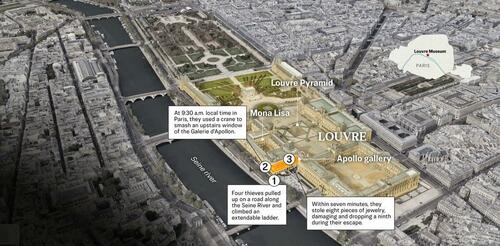
Questions about security arrangements at the world’s most visited museum, which attracts close to 9 million visitors per year, have been raised in the aftermath of the broad-daylight theft, along with speculation about who could be behind the crime.
As special investigators scramble to catch those involved, here’s what to know about how the heist was pulled off in mere minutes, what was stolen—and why experts fear the jewels may never be recovered.
How It Happened
Thieves wearing balaclavas broke into an upstairs gallery on the morning of Oct. 19 using a truck-mounted basket lift known as a “cherry picker” to smash an upstairs window before looting precious objects from an area that houses the French crown jewels.
The robbers struck at 9.30 a.m. local time, just half an hour after the museum opened its doors to the public, Paris prosecutor Laure Beccuau told French TV.
They pulled up on a road along the Seine River and climbed an extendable ladder on the cherry picker to break into a window of the Galerie d'Apollon building. Although the thieves didn’t carry conventional weapons, they threatened the museum’s guards with the angle grinders they used to slice through the museum’s window, according to Beccuau.
Le Monde and other French media outlets reported that there were four thieves, two of whom wore reflective yellow vests intended to make them look like construction workers. Two rode in the truck, while two were on scooters.
The gang tried unsuccessfully to set fire to the crane as they fled the scene of the crime on motorbikes.
The museum was evacuated as the alarm sounded following the smash and grab, remaining closed through Oct. 20.
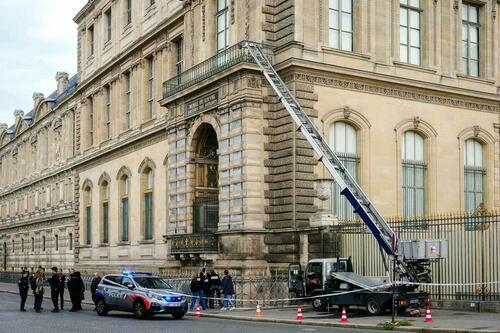
What Was Stolen?
While nine objects were targeted, eight were successfully stolen. The thieves dropped the ninth, the crown of Napoleon III’s wife, Empress Eugénie, during their escape, the prosecutor said. The piece is adorned with 1,354 diamonds and 56 emeralds, according to the museum’s website.
Drouot auction house President Alexandre Giquello told Reuters that the auction house would value the crown at “several tens of millions of euros,” noting that in his opinion, it was “not the most important item” in the targeted haul.
The Culture Ministry said the eight stolen items include:
- A tiara from a sapphire jewelry set belonging to Queen Marie‑Amélie and Queen Hortense
- A necklace from the same sapphire set
- A single earring (one half of a pair) from that sapphire set
- An emerald necklace from the jewelry set of Empress Marie‑Louise (Napoleon I’s second wife)
- A pair of emerald earrings from the Marie-Louise set
- A brooch known as the “reliquary brooch”
- A tiara belonging to Empress Eugénie (wife of Napoleon III)
- A large bodice-knot brooch (corsage bow brooch) belonging to Empress Eugénie
Mystery surrounds why the thieves did not also steal the Regent diamond, which is housed in the Galerie d'Apollon and has an estimated value of more than $60 million, according to Sotheby’s.
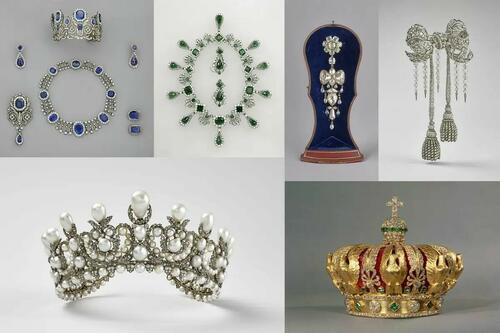
Who Could Be Behind It?
Beccuau said in the immediate aftermath of the crime that nothing was being ruled out and that all lines of inquiry were open—although foreign interference was not among investigators’ main hypotheses.
She said it was likely that the robbery was either commissioned by a collector—in which case there was a chance of recovering the pieces in a good state—or carried out by thieves interested only in the monetary value of the jewels and precious metals.
“We’re looking at the hypothesis of organized crime,” the prosecutor said, noting that the culprits could be thieves working on spec for a buyer or seeking jewels that could be used to launder criminal proceeds.
“Nowadays, anything can be linked to drug trafficking, given the significant sums of money obtained from [this crime].”
The probe is being led by a specialized police unit with a high success rate in solving high-profile robberies, according to French Interior Minister Laurent Nuñez.
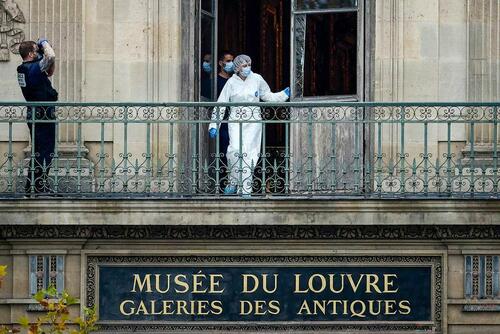
Why Wasn’t Security Tighter?
The heist has reignited a debate around funding for museums, which are far less secure than banks, despite being increasingly targeted by thieves.
Earlier this year, officials at the Louvre urgently requested funding from the French government to restore and renovate the museum’s aging exhibition halls and better protect its countless works of art.
French President Emmanuel Macron said on X that a new government plan for the Louvre announced in January “provides for strengthened security.” Despite the French president’s promise of a 700 million euro refurbishment, museum staff went on strike in June over what they said was dangerous overcrowding.
Culture Minister Rachida Dati said on a visit on Oct. 20 to the scene of the crime that the issue of museum security is not new.
“For 40 years, there was little focus on securing these major museums, and two years ago, the president of the Louvre requested a security audit from the police prefect. Why? Because museums must adapt to new forms of crime,” she said. “Today, it’s organized crime—professionals.”
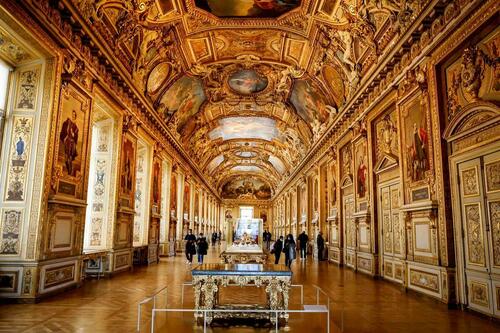
Justice Minister Gérald Darmanin said the crime cast France in a “deplorable” light. Opposition politicians criticized the government for what they branded a national humiliation at a time when the country is already deep in political crisis.
Christopher Marinello, founder of Art Recovery International, an organization that specializes in recovering stolen art, said, “The Louvre is one of the most well funded museums in the world. And if they’re going to be hit, every museum is vulnerable.”
France will review the protection of cultural sites across the country and beef up security if needed, officials said on Oct. 20.
Does the Theft Surpass Previous Heists?
This is far from the first theft from the famous Parisian museum, which has been targeted many times, with some of those headline-hitting heists being made into films.
In one of the most famous and daring art thefts in history, the Mona Lisa was stolen from the museum in a 1911 theft carried out by a former employee who had knowledge of the layout and security of the building.
Read the rest here...
Loading recommendations...